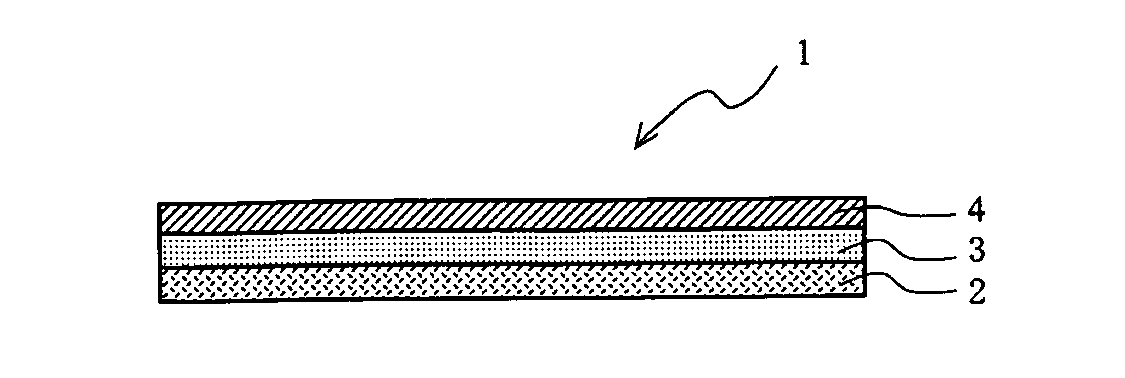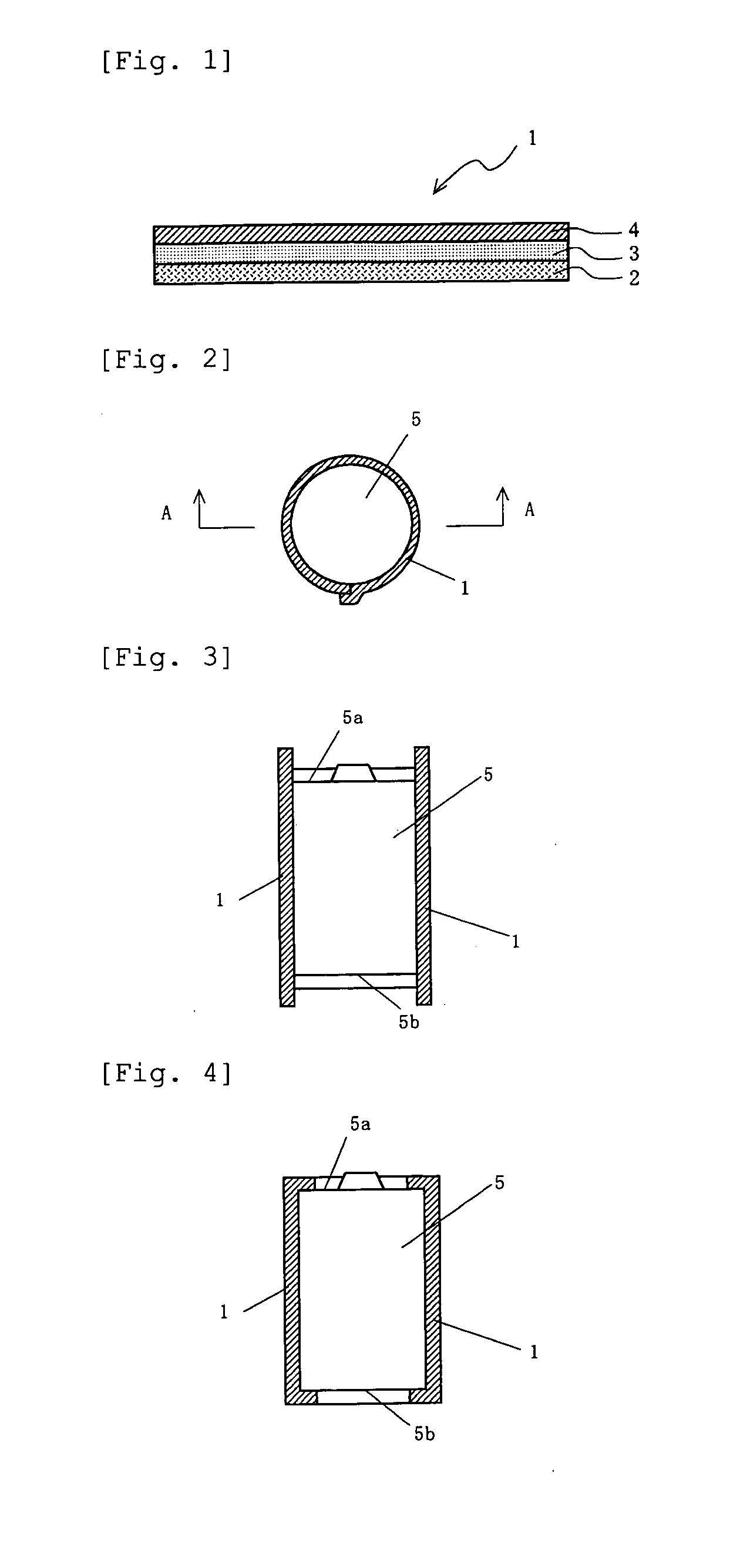Battery Packaging Labels
- Summary
- Abstract
- Description
- Claims
- Application Information
AI Technical Summary
Benefits of technology
Problems solved by technology
Method used
Image
Examples
example 1
[0053]A heat shrinkable polyester film (thickness: 50 μm; heat shrinkage starting temperature: 90° C.) was used as a heat shrinkable film. This heat shrinkable film has a percentage of heat shrinkage in the machine direction of 17% after being immersed in a glycerol bath at 110° C. for five seconds, of 35% after being immersed in a glycerol bath at 140° C. for five seconds, and of 1.4% after being immersed in a glycerol bath at 90° C. for five seconds. The heat shrinkable film has a percentage of heat shrinkage in a transverse direction (cross direction) of 2% after being immersed in a glycerol bath at 110° C. for five seconds. The heat shrinkable film was subjected to gravure printing of various kinds of indication designs on one side thereof to form a printed layer of 2 μm thick thereon, and an emulsive heat-sensitive adhesive (activation temperature: about 65° C.) was applied onto the printed layer through gravure printing to form an adhesive layer 2 μm thick thereon. The emulsiv...
example 2
[0054]A label was prepared by the procedure of Example 1, except for using, as the emulsive heat-sensitive adhesive, an emulsive heat-sensitive adhesive (activation temperature: about 65° C.) containing 80 percent by weight of an ethylene-vinyl acetate copolymer having an ethylene content of 72 percent by weight (melting point: 63° C., MFR: 280 g / 10 minutes) and 20 percent by weight of the same tackifier as in Example 1.
example 3
[0055]A label was prepared by the procedure of Example 1, except for using, as the emulsive heat-sensitive adhesive, an emulsive heat-sensitive adhesive (activation temperature: about 65° C.) containing 80 percent by weight of the same ethylene-vinyl acetate copolymer as in Example 1 and 20 percent by weight of the same tackifier as in Example 1.
PUM
| Property | Measurement | Unit |
|---|---|---|
| Temperature | aaaaa | aaaaa |
| Temperature | aaaaa | aaaaa |
| Temperature | aaaaa | aaaaa |
Abstract
Description
Claims
Application Information
 Login to View More
Login to View More - R&D
- Intellectual Property
- Life Sciences
- Materials
- Tech Scout
- Unparalleled Data Quality
- Higher Quality Content
- 60% Fewer Hallucinations
Browse by: Latest US Patents, China's latest patents, Technical Efficacy Thesaurus, Application Domain, Technology Topic, Popular Technical Reports.
© 2025 PatSnap. All rights reserved.Legal|Privacy policy|Modern Slavery Act Transparency Statement|Sitemap|About US| Contact US: help@patsnap.com


